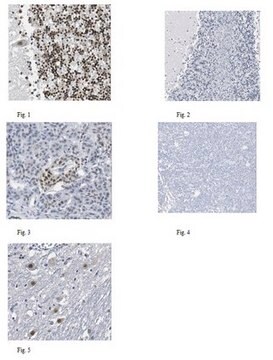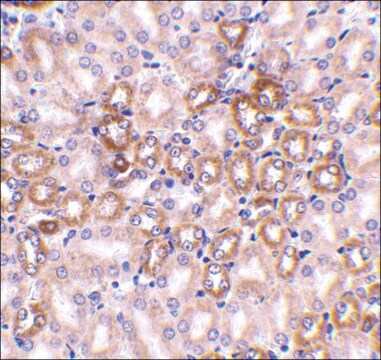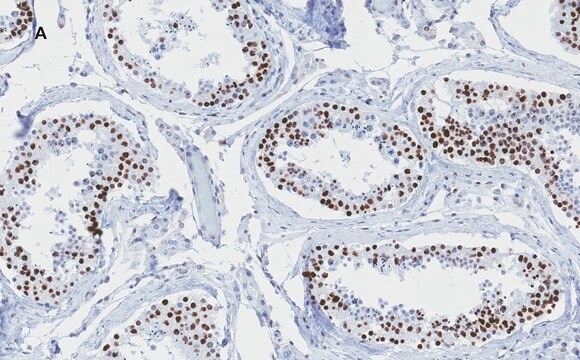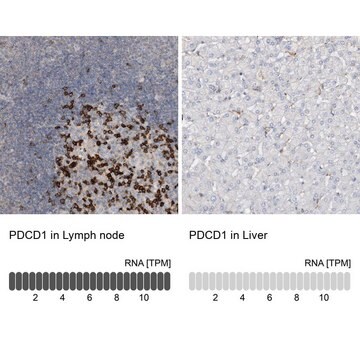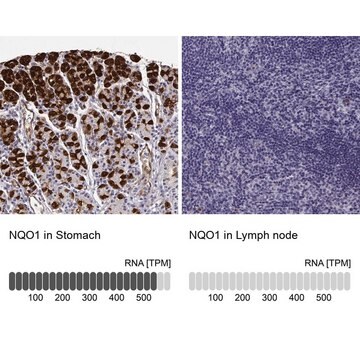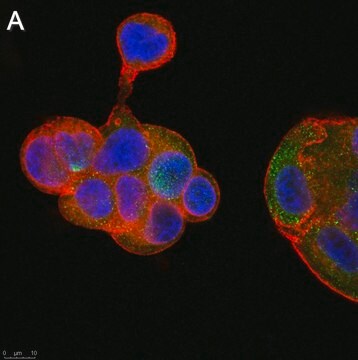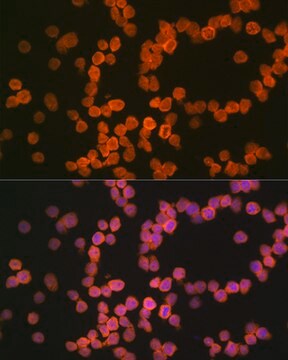MAB1275
Wspólne przeciwciało anty-HLA-ABC, klon 22.63.4
clone 22.63.4, Chemicon®, from mouse
About This Item
Polecane produkty
pochodzenie biologiczne
mouse
Poziom jakości
forma przeciwciała
purified antibody
rodzaj przeciwciała
primary antibodies
klon
22.63.4, monoclonal
reaktywność gatunkowa
human
producent / nazwa handlowa
Chemicon®
metody
flow cytometry: suitable
immunocytochemistry: suitable
immunohistochemistry: suitable
izotyp
IgG2b
numer dostępu NCBI
numer dostępu UniProt
Warunki transportu
wet ice
docelowa modyfikacja potranslacyjna
unmodified
informacje o genach
human ... HLA-A(3105)
Powiązane kategorie
Opis ogólny
Specyficzność
Reaktywność komórek:
Przeciwciało reaguje ze wszystkimi komórkami posiadającymi antygen powierzchniowy HLA-ABC. Erytrocyty, K562 i DAUDI są ujemne.
Immunogen
Zastosowanie
SUGEROWANE ROZCIEŃCZENIE
1. Cytometria przepływowa i immunofluorescencja pośrednia 1:15 - 1:60
Rozcieńczyć buforem izotonicznym. Użyć 50 μl rozcieńczonego przeciwciała na 1 x 10E6 komórek jednojądrzastych krwi obwodowej (PBMC) w 100 μl buforu.
2. Pośrednie barwienie immunoperoksydazą - ostateczne rozcieńczenie będzie zależeć od warunków testu i zastosowanego systemu wykrywania. Jednak rozcieńczenie co najmniej 1:15 będzie miało zastosowanie do większości powszechnie stosowanych systemów.
Inflammation & Immunology
Immunoglobulins & Immunology
Powiązanie
Postać fizyczna
Przechowywanie i stabilność
OSTRZEŻENIE: Roztwór odczynnika monoklonalnego zawiera 0,05% azydku sodu jako środek konserwujący. Ze względu na potencjalne zagrożenia wynikające z gromadzenia się tego materiału w przewodach, zużyty odczynnik należy usuwać z dużą ilością wody.
Inne uwagi
Informacje prawne
Oświadczenie o zrzeczeniu się odpowiedzialności
Nie możesz znaleźć właściwego produktu?
Wypróbuj nasz Narzędzie selektora produktów.
Kod klasy składowania
12 - Non Combustible Liquids
Klasa zagrożenia wodnego (WGK)
WGK 2
Temperatura zapłonu (°F)
Not applicable
Temperatura zapłonu (°C)
Not applicable
Certyfikaty analizy (CoA)
Poszukaj Certyfikaty analizy (CoA), wpisując numer partii/serii produktów. Numery serii i partii można znaleźć na etykiecie produktu po słowach „seria” lub „partia”.
Masz już ten produkt?
Dokumenty związane z niedawno zakupionymi produktami zostały zamieszczone w Bibliotece dokumentów.
Nasz zespół naukowców ma doświadczenie we wszystkich obszarach badań, w tym w naukach przyrodniczych, materiałoznawstwie, syntezie chemicznej, chromatografii, analityce i wielu innych dziedzinach.
Skontaktuj się z zespołem ds. pomocy technicznej